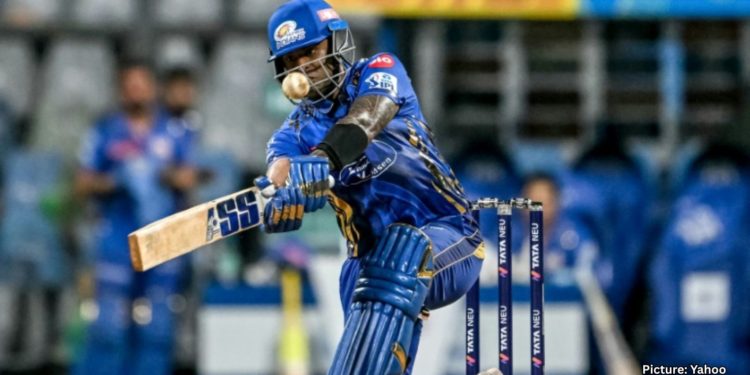Ravindra Jadeja stuck to the plan and was 31 off 23 balls as the 18th over began. It was finally time for him to make his move.
The batting line-up of Chennai Super Kings (CSK) lacks the necessary confidence to make powerful hits from the very beginning. This fear stems from their belief that they may end up with low scores, and therefore lose the match before their bowlers have a chance to shine. This explains why they rank at the bottom for various statistics such as run-rate in the powerplay and overall performance. Although this is not an ideal strategy, it is a result of the current form and capabilities of their players.
At 145 for 4, Jadeja of CSK was well-established. However, MI strategically chose to bring in a left-arm spinner to face him. Although the over went at a run-a-ball rate, it was mainly due to wides. It’s worth noting that Santner, who usually doesn’t bowl in the final overs, had only bowled one full over in this block during IPL 2025 prior to this game. But MI specifically saved him for this moment, where his stock delivery would be within the batter’s hitting range.
Multiple teams have attempted to stop Jadeja at the crease by spinning the ball. Despite facing 58 deliveries, he has only been able to notch 51 runs, consistent with his performance in recent years. While he has transformed into a power hitter, he has consistently faced difficulties when faced with this type of bowling.
CSK head coach Stephen Fleming believes Jadeja has yet to reach his full potential. “There’s definitely room for growth and it’s an open chance for him,” Fleming noted. “Although he has delivered in some matches before, he hasn’t had a consistent opportunity to showcase his abilities and it ultimately comes down to his attitude.”
Put another way, Jadeja lacks a desire to smash the ball with force. During this season, he has only managed to hit two boundaries against spin. At times, it appears as though he isn’t putting in much effort. As a result, he has faced numerous deliveries from spinners, even during crucial moments towards the end of the game. To address this issue, Fleming is working on correcting Jadeja’s approach.
During his training session before the Sunrisers Hyderabad (SRH) match, Jadeja spent approximately 30 minutes facing two legspinners and a throwdown specialist. His main objective was to successfully step out of his crease and execute the slog sweep. While his performance was varied, he is not the sole player in this situation.
In the past decade of IPL cricket, CSK’s average (18.84) and strike rate (110) against spin has consistently placed them among the bottom five teams in both categories. However, despite having a player who excels at scoring boundaries against slower deliveries, he is unable to fulfill that role due to having to compensate for other weaknesses within the team.
According to Fleming, successful run production from our top players is crucial. This will allow each player to fulfill their designated role and make use of their strengths. For example, Shivam Dube has been playing multiple roles, such as holding the innings together and finishing games. In the past, he has also displayed his ability to dominate in the middle overs and turn the game around. Due to the demand for resilience in the game, there has been a slight change in approach.
The previous strong CSK squads were able to cover up their players’ deficiencies, which is why Jadeja was placed lower in the batting order. This was not because he excelled as a finisher, but because his strength lay in facing fast bowlers and hitting them for runs. However, the current situation shows numerous weak spots – the top-order struggling to score, the middle order unable to compensate – making the team highly susceptible. This season, instead of maintaining what worked well, CSK has been trying to fix recurring issues by altering successful tactics.



















